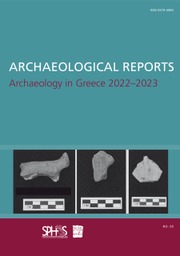Article contents
Rural sites in Roman Greece
Published online by Cambridge University Press: 08 December 2014
Extract
[W]hile pretending to throw some light upon classical authors by careful observation of the manners of the present day, romantic travellers succeeded in fact in accommodating reality to their dreams … by creating for themselves and for their readers carefully edited portraits of modern Greece that transformed the present into the living image of the past (Saïd 2005: 291).
Thirty years ago archaeological field survey promised to reshape radically our understanding of the countryside (Keller and Rupp 1983: 1–5). Traditional archaeological approaches to cities and monuments were increasingly seen to be extensions of textual research, and research on the rural landscape was envisaged as a way to access the other side of the traditional urban-rural dichotomy (though see the comments in Alcock 2007: 671–72). Some scholars estimated that, in the Classical period, the vast majority of Greek poleis had populations of less than 3,000 and territories no more than a few hours” walk from the urban core. Given that, they asked, does it make sense to divide elements of Greek life into “city” and “country”? In a sense, the study of landscapes was seen as a way to redress perceived imbalances between this urban-rural division and the picture painted by the ancient sources of Roman Greece as a pale reflection of its Classical brilliance. In the years since, landscape studies have grown to include much more than archaeological field survey, but this tension between textual and archaeological narratives remains at the heart of understandings of rural Roman Greece.
- Type
- Archaeology in Greece 2013–2014
- Information
- Copyright
- Copyright © Authors, the Society for the Promotion of Hellenic Studies and the British School at Athens 2014
- 4
- Cited by


